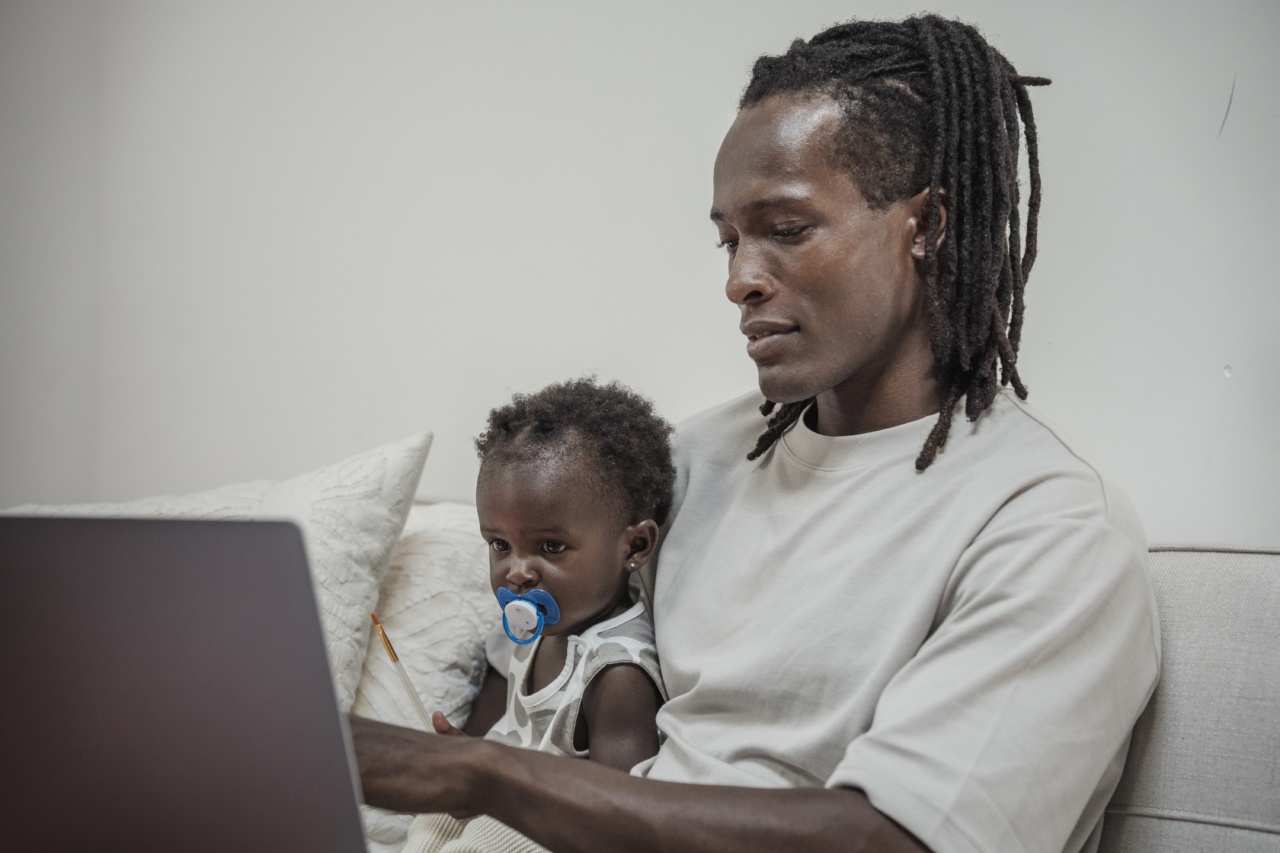Cranial deformation or flat head syndrome refers to the asymmetry or flattening of the baby’s head due to external pressure during the early months of life. Most parents use cranial deformation pillows to correct this condition.
Cranial deformation pillows work by repositioning the baby’s head during sleep by distributing the pressure evenly. Parents believe these pillows are safe and effective in improving their babies’ head shape. However, research indicates otherwise. In this article, we will discuss 30 reasons why you should not use cranial deformation pillows on babies.
1. No Scientific Evidence to Support Efficacy
The World Health Organization (WHO) and the American Academy of Pediatrics (AAP) do not recommend the use of cranial deformation pillows to treat or prevent flat head syndrome.
Furthermore, there is no scientific evidence to support the efficacy of cranial deformation pillows. No randomized controlled trials have established the effectiveness of these pillows in treating flat head syndrome.
2. Potentially Dangerous for Your Baby
Cranial deformation pillows can be dangerous for your baby. The pillows pose a suffocation risk, especially if your baby rolls over or turns their head. The pillows can also tip over, increasing the risk of choking or strangulation.
Additionally, the pillows’ soft materials can cover your baby’s nose and mouth, making it difficult for them to breathe.
3. May Have Adverse Effects on Your Baby’s Health
A 2017 study published in Pediatric Neurology found that cranial deformation pillows can adversely impact your baby’s health.
Babies who slept on the pillows were more likely to develop positional plagiocephaly, an abnormal curvature of the skull that can lead to developmental delays. Moreover, the study found that cranial deformation pillows can increase the risk of sudden infant death syndrome (SIDS).
4. May Interfere with the Natural Development of Your Baby’s Skull
Your baby’s skull is designed to grow and change shape naturally. Cranial deformation pillows interfere with the natural development of your baby’s skull by applying constant pressure to the same area.
The pillows can cause the skull to stop developing in certain areas while promoting growth in others. This can lead to uneven skull growth, deformities, and medical problems.
5. May Lead to a Permanent Deformity
When you use a cranial deformation pillow on your baby, you’re taking a significant risk. Over time, the constant pressure can lead to permanent skull deformation. Once the deformity occurs, it may be challenging or impossible to correct.
Your baby will have to live with the deformity, which can cause self-esteem issues and other problems.
6. Can Cause Neck Strain and Stiffness
The design of cranial deformation pillows can also cause neck strain and stiffness. The pillows elevate the baby’s head while sleeping, leading to an increased range of motion for the neck muscles.
This can cause stiffness and pain in the neck, making it difficult for your baby to move their head naturally.
7. Not Approved by the Food and Drug Administration (FDA)
Cranial deformation pillows are not approved by the Food and Drug Administration (FDA). The FDA regulates medical devices and products, including pillows designed for medical purposes.
The lack of FDA approval indicates that cranial deformation pillows have not undergone rigorous testing to establish their safety and effectiveness.
8. Expensive and Not Covered by Insurance
Cranial deformation pillows can be expensive. Parents may pay hundreds of dollars for a single pillow.
Additionally, most medical insurance policies do not cover the cost of the pillows, meaning you’ll have to pay out-of-pocket expenses for a treatment that has not been proven effective.
9. Time-Consuming and Uncomfortable for Your Baby
Using a cranial deformation pillow requires a significant investment of time and energy. The pillows must be changed frequently, and your baby may find them uncomfortable.
The discomfort can lead to a lack of sleep, which can impact your baby’s overall health and mood.
10. May Cause Jaw Misalignment and Dental Issues
Cranial deformation pillows can also cause jaw misalignment and dental issues. The pillows can place pressure on the jaw, leading to a misaligned jaw.
Misaligned jaws can cause various dental problems, including tooth decay, gum disease, and cosmetic issues.
11. Can Cause Skin Irritation and Rashes
The materials used to make cranial deformation pillows can cause skin irritation and rashes. The pillows are often made of synthetic materials that can trap heat and moisture, leading to skin irritation.
Additionally, the pillows can cause pressure sores, especially if your baby sleeps or lies on them for extended periods.
12. May Alter Your Baby’s Sleeping Position
One of the risks of using cranial deformation pillows is that they can alter your baby’s sleeping position. Some parents report that the pillows make their baby sleep in uncomfortable positions, leading to poor quality sleep.
Poor quality sleep can cause irritability and other issues that can impact your baby’s development.
13. May Delay Your Baby’s Motor Development
Cranial deformation pillows can also delay your baby’s motor development. The pillows can make it difficult for your baby to turn their head independently, leading to a delay in neck muscle development.
This can impact your baby’s ability to reach developmental milestones and can lead to long-term developmental delays.
14. May Decrease Your Baby’s Muscle Tone
Using a cranial deformation pillow can also decrease your baby’s muscle tone. The pillows prevent your baby from moving their head naturally. This can cause muscle weakness and decrease your baby’s muscle tone.
Decreased muscle tone can cause your baby to develop motor delays and can negatively impact their overall health.
15. Time Limited Effectiveness
Cranial deformation pillows may only work for a limited time, and their benefits may not last. Once you stop using the pillows, the flattening may return.
Therefore, parents will have to decide whether or not the short-term benefits of using the pillow outweigh the long-term risks.
16. Not Worth the Risk
Using a cranial deformation pillow poses many risks to your baby’s physical and mental health. The lack of scientific evidence supporting the use of these pillows indicates that they are not worth the risk.
While parents may feel they must do something to address their baby’s flat head syndrome, using a cranial deformation pillow is not the answer.
17. Safe Alternatives to Cranial Deformation Pillows
If you’re concerned about your baby’s flat head syndrome, several safer alternatives can help. One of the most effective ways to treat flat head syndrome is through tummy time.
Allow your baby to spend time on their stomach while awake, as this helps them develop neck and back muscles. Additionally, repositioning your baby’s head during sleep can help. Don’t leave your baby to sleep in the same position every night. Instead, use different positions using rolled-up towels or blankets.
18. Use of Specialized Mattresses
You can also choose specialized mattresses designed to prevent flat head syndrome. These mattresses distribute the pressure evenly across your baby’s head, reducing the risk of flattening or asymmetry.
Using these mattresses is safer and more effective than using cranial deformation pillows.
19. Physical Therapy
In severe cases, physical therapy may be necessary. Physical therapy helps strengthen your baby’s neck and back muscles, facilitating the proper development of the skull. Your baby’s pediatrician can prescribe physical therapy if necessary.
20. Avoiding Extended Use of Baby Carriers, Bouncers, and Swings
Extended use of baby carriers, bouncers, and swings can increase the risk of flat head syndrome. Therefore, limit the use of these products, and do not let your baby sleep in them for extended periods.
When your baby is awake, allow them to move and stretch their limbs freely. This will help promote natural skull growth and development.
21. Monitor Your Baby’s Head Shape Regularly
It is essential to monitor your baby’s head shape regularly. Doing so will help detect any asymmetry early enough for corrective intervention.
Take photos of your baby’s head from different angles, and compare them over time to identify any changes. If you notice any asymmetry or flattening, talk to your pediatrician.
22. Avoid Pressure on the Baby’s Head
Avoid placing pressure on your baby’s head, especially during sleep. This can increase the risk of flattening or asymmetry.
You can avoid pressure by avoiding the use of helmets, headbands, and tight hats unless they are necessary for medical reasons.
23. No Need to Panic
If your baby’s head shape is slightly asymmetrical or flat, there is no need to panic. In most cases, the asymmetry will resolve on its own as your baby grows and develops. However, if you’re concerned, talk to your pediatrician.
24. Pay Attention to Your Baby’s Sleeping Habits
Your baby’s sleeping habits can impact their head shape. Make sure your baby has a safe sleeping environment, and avoid placing them in positions that can increase the risk of flattening or asymmetry.
Additionally, pay attention to how long your baby sleeps in the same position and adjust their position accordingly to prevent flat head syndrome.
25. Relax and Enjoy Your Baby
Raising a baby is challenging, and it’s easy to worry about everything. However, it’s important to relax and enjoy your baby. You’ll both benefit when you’re not stressed or worried about every little thing.
Remember that asymmetry or flat head syndrome is not a medical emergency and can be easily corrected with proper intervention.
26. Be Informed and Ask Questions
It’s essential to be informed and ask questions when necessary. If you’re not sure about the safety or efficacy of a medical intervention, ask your pediatrician.
Your pediatrician can provide you with accurate and reliable information on the various options available to treat flat head syndrome.
27. Don’t Believe Everything You Read on the Internet
The internet is a great source of information, but not all information on the internet is accurate or reliable. Be careful and take the time to verify the authenticity of the information before believing or acting on it.
Use reputable websites and sources for your research and information gathering.
28. Educate others about Flat Head Syndrome
Flat head syndrome is quite common, and many parents are not aware of the condition or the various treatment options available. Educate your friends, family, and caregivers about the condition and the safe and effective ways to treat it.
Share information and resources on the topic to help others make informed decisions.
29. Follow Your Pediatrician’s Advice
Your pediatrician is your best source of information when it comes to your baby’s health and development. Follow your pediatrician’s advice on the best course of action to take if you’re concerned about your baby’s head shape.
Your pediatrician can provide a personalized treatment plan tailored to your baby’s specific needs and medical history.
30. Conclusion
Flat head syndrome is a common condition that affects many babies. While cranial deformation pillows are a popular intervention for treating the condition, they are not safe or effective.
Instead, use safe and effective alternatives such as tummy time, specialized mattresses, and physical therapy. Pay attention to your baby’s sleeping habits, avoid placing pressure on their head, and monitor their head shape regularly. Be informed, ask questions, and follow your pediatrician’s advice. Most importantly, relax and enjoy your baby.





























